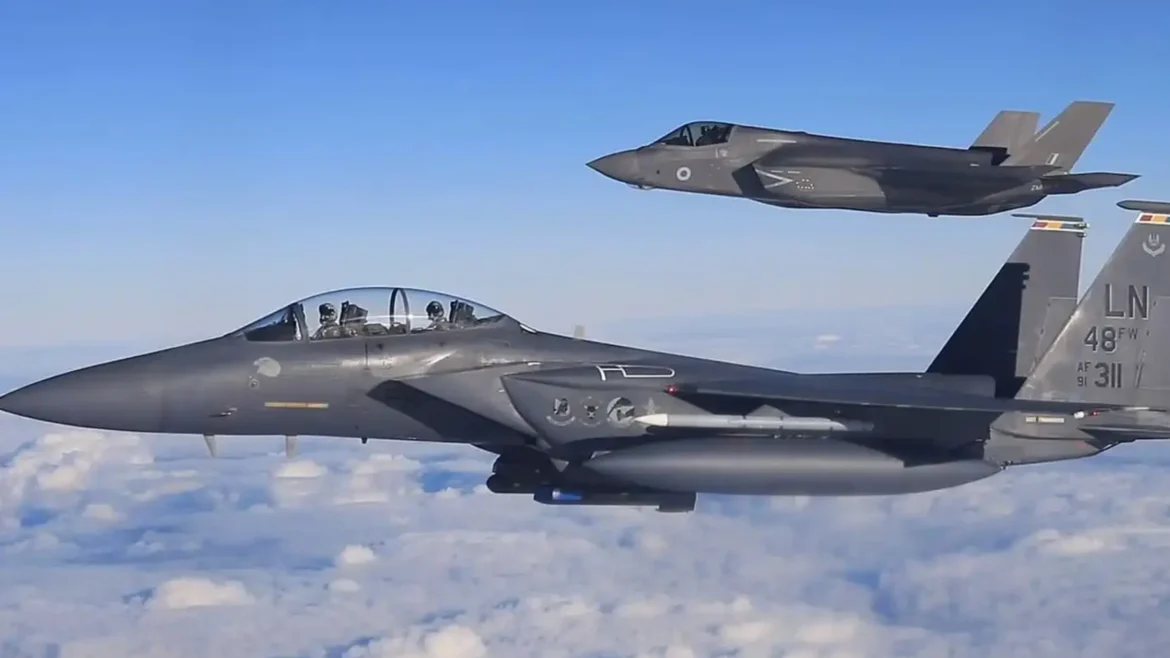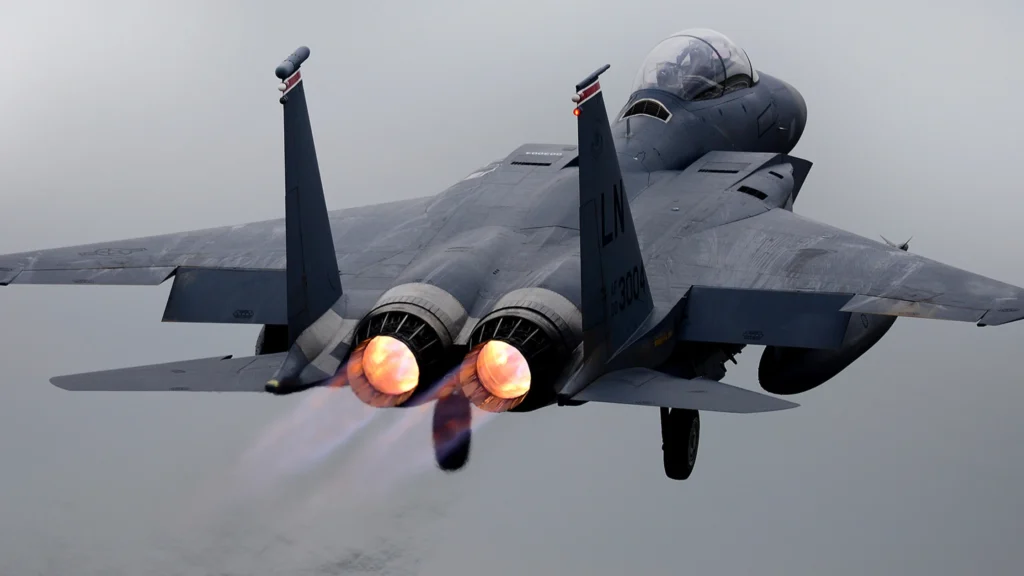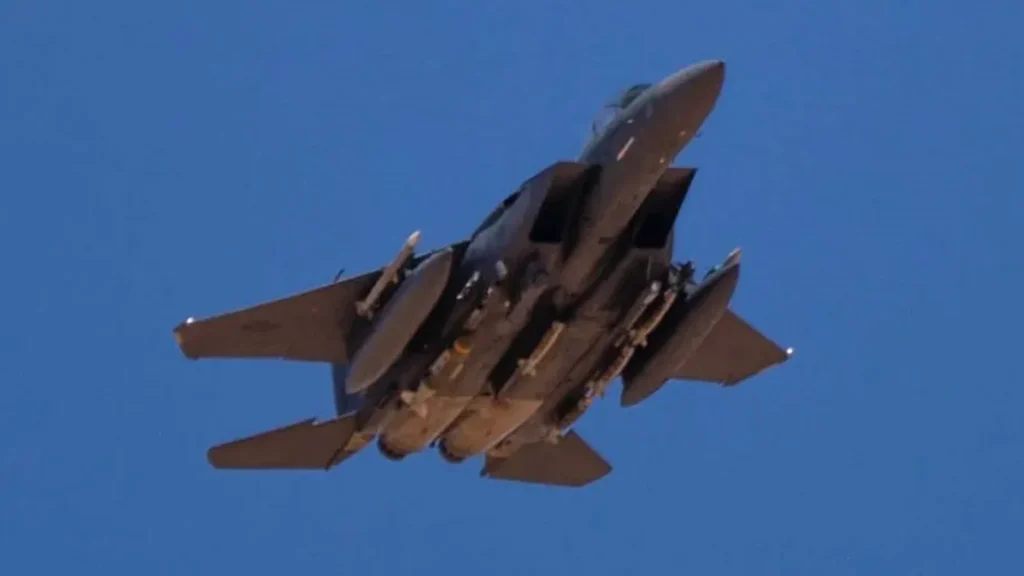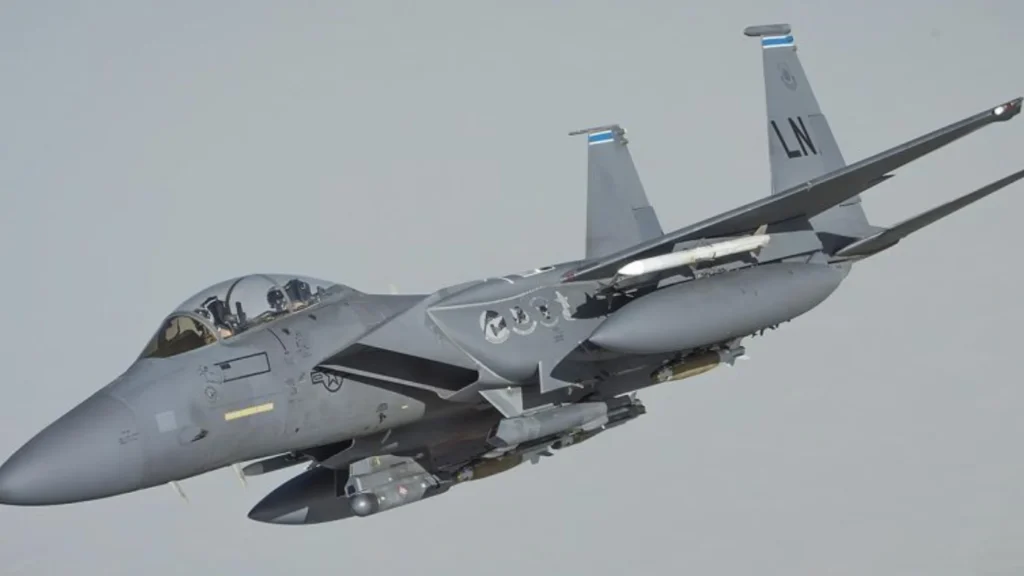
Introduction
Imagine a super-fast jet screaming across the sky, protecting countries and dropping bombs on bad guys. That’s the F-15E Strike Eagle! For over 30 years, these amazing planes have lived at RAF Lakenheath in the UK. They’ve helped keep Europe safe and worked with America’s friends in NATO.
But now, the US Air Force wants to say goodbye to them. They’re planning the F-15E Strike Eagle withdrawal UK and bringing in a new jet, the F-35A Lightning II. Why are they doing this? What happens next? This article simply explains everything.
The History of F-15E in the UK
F-15E Strike Eagle first landed inside the UK at the beginning of the 90s. RAF Lakenheath, a large American air base in England, has become their domestic. These two-engine fighter aircraft can fly 1,875 miles according to an hour-twice the speed of sound! They bring bombs, missiles and even lasers to hit the targets with accuracy.
Over the years, missions have fallen on places such as Iraq, Afghanistan and Libya. For example, in 2011, the F-15es from Lakenheath helped prevent war in Libya through the location of enemy tanks.. They’ve been a key part of the US military footprint in Britain, showing power and teamwork with the UK.
Reasons for the F-15E Strike Eagle Withdrawal UK
The US Air Force says it’s time for a The US Air Force says it’s time for a change. Some of these jets are over thirty years old, making them antique! Repair to them spend a lot of money. In addition, new enemies now have higher weapons, so the US wants stronger jets. The F-15E is difficult, but now it is not invisible to radar as a modern aircraft.
In addition, the Air Force wants to store coins and pay attention to top technology. This pass suits a huge plan called the Global Force Posture Review, which will move us along the arena. So, the F-15E drawing in the UK makes room for something new.

The Rise of the F-35A: A New Era for RAF Lakenheath
Meet the F-35A Lightning II—the jet replacing the F-15E. It’s a stealth fighter, which means radar can’t spot it easily. It flies slower than the F-15E, but it’s smarter. The F-35A uses high-tech sensors to find targets and share info with other planes.
It can carry bombs inside its body, not just outside, making it even sneakier.
The F15E Strike Eagle pullout in the UK makes room for F-35As to take over at RAF Lakenheath. This switch boosts NATO airpower shift and keeps the base ready for action. The F-35A is already flying in other countries, proving it’s the future of fighter jets.
F-15E vs F-35 Comparison
How do these jets stack up? The F-15E is a multirole fighter, great for bombing and air battles. It’s fast and carries tons of weapons. The F-35A focuses on stealth and tech. It’s not as quick, but it hides better and talks to drones or ships. Think of the F-15E as a strong boxer and the F-35A as a clever ninja. Both are awesome, but the US picks the ninja for tomorrow’s fights.
Impact on NATO and UK-US Defence Cooperation
RAF Lakenheath has been a hub for US fighter jets leaving UK missions. With F-15Es gone, F-35As step in to keep the teamwork strong. NATO needs modern jets to scare off threats, like Russia’s air force. The F-35A’s stealth and smarts make NATO tougher.
Plus, the UK and US train together at Lakenheath. The new jets mean more high-tech practice, strengthening UK-US defence cooperation. This change shows the US isn’t leaving Europe—it’s upgrading its game.
What’s Next for RAF Lakenheath?
RAF Lakenheath won’t shut down after the F-15E Strike Eagle withdrawal UK. It’s getting a makeover! The base will host two squadrons of F-35As—about 48 jets. Workers are building new hangars and training areas right now.
The base stays a top spot for US military presence in Europe. Local people might miss the roar of F-15Es, but F-35As bring jobs and action. Experts say Lakenheath will keep its strategic significance as a UK airbase. It’s not the end of F-15E UK operations—it’s a fresh start with cooler tech.
RAF Lakenheath: Past, Present, and Future
RAF Lakenheath is like a big airport for US planes in the UK. It’s in Suffolk, England, and has been super important since World War II. In 1992, it began to house F-15Es, which have been essential for missions in Africa, the Middle East, and Europe.
A Look Back
In the past, RAF Lakenheath was home to bombers, but it switched to fighter jets like the F-15E. These planes flew long missions, like attacking ISIS targets in Libya in 2015 and 2016. They also helped NATO in 1999 during a conflict in the Balkans, flying for hours with lots of weapons.
What’s Happening Now
Significant changes will result from the F-15E Strike Eagle’s removal from the UK. F-35A jets are being prepared at the base. F-35As are now being used by two squadrons, the 493rd and 495th Fighter Squadrons, and more will be added by the end of 2025.

The Future
RAF Lakenheath might become an all-F-35 base. It’s also getting new buildings to possibly hold nuclear bombs, called B61-12s. This would make the base even more important for keeping peace. But there’s a catch: some worry the F-35As might not be ready on time because of software problems.
| Aspect | RAF Lakenheath Past | RAF Lakenheath Future |
|---|---|---|
| Main Aircraft | F-15E Strike Eagles | F-35A Lightning II |
| Role | Air-to-air and air-to-ground missions | Stealth missions, possible nuclear role |
| Key Missions | Libya strikes, Balkans support | NATO deterrence, rapid response |
| Challenges | Aging F-15E engines | F-35A delivery delays |
F-15E vs. F-35A: A Big Switch
The F-15E Strike Eagle and F-35A Lightning II are both amazing, but they’re different. Let’s compare them:
- Stealth: The F-35A is super sneaky because it’s hard for radar to spot. The F-15E isn’t stealthy so that enemies can see it more easily.
- Range and Weapons: The F-15E can fly farther (2,100 miles) and carry more bombs (up to 11 hardpoints). The F-35A carries fewer weapons to stay stealthy.
- Tech: The F-35A has fancy sensors that share info with other planes fast. The F-15E has great tech too, like the EPAWSS system, but it’s not as advanced.
The F-15E Strike Eagle withdrawal from the UK means the Air Force is betting on the F-35A’s stealth and tech. But some experts think the F-15E’s power and range will be missed, especially for long missions.
| Feature | F-15E Strike Eagle | F-35A Lightning II |
|---|---|---|
| Stealth | Not stealthy | Very stealthy |
| Crew | 2 (pilot, weapon systems officer) | 1 (pilot only) |
| Range | 2,100 miles (with extra tanks) | 1,200 miles |
| Weapons | More bombs, missiles (11 hardpoints) | Fewer weapons (internal bays for stealth) |
| Top Speed | Mach 2.5 (1,650 mph) | Mach 1.6 (1,200 mph) |
What Does This Mean for NATO and the World?
NATO is a group of countries, like the US and the UK, that work together to stay safe. The F-15E Strike Eagle withdrawal from the UK might make NATO’s air power a bit weaker because there will be fewer planes ready to go in Europe.
The F-15Es were great for quick missions, like protecting allies or striking faraway targets.
Impact on NATO
The F-35A is awesome, but it can’t do everything the F-15E did. For example, it carries fewer bombs and doesn’t fly as far. It could make it harder for NATO to respond fast to problems, especially in places like Poland or Ukraine. But the F-35A’s stealth and tech might help in other ways, like sneaking past enemy defences.
U.S.-UK Teamwork
The US and the UK are super close allies. The F-15E Strike Eagle withdrawal from the UK doesn’t change that. RAF Lakenheath will still be a key base, especially if it gets nuclear bombs. It shows the US trusts the UK to help keep Europe safe.
Controversy
Some groups, like the Campaign for Nuclear Disarmament, are upset. They think the F-35As might bring nuclear weapons back to the UK, which they don’t want. It has sparked debates about whether nuclear bombs are needed for peace.
The F-15E Drawdown’s Geopolitical Repercussions in the UK
This withdrawal ripples across the world. The F-15E Strike Eagle withdrawal UK signals a shift in US Air Force base closures and strategy. Europe faces big challenges, like Russia’s moves near Ukraine. Swapping F-15Es for F-35As shows the US wants to stay strong here.
It’s part of a transatlantic defence strategy to scare off enemies. Some worry fewer old jets mean less power, but experts argue that stealth jets balance it out. For example, General John Smith from the Pentagon said, “The F-35A keeps us ahead.” This move proves the US military jet removal UK isn’t a retreat—it’s a recharge.

Timeline and Future Plans
When will the F-15E Strike Eagle withdrawal UK happen? The US Air Force hasn’t set exact dates, but it’s coming soon. Reports from 2023 say the pullout starts in 2025 and ends by 2027. F-35As are already arriving—some landed at Lakenheath in 2021!
The switch will take years because moving jets is tricky. The Air Force must train pilots, fix runways, and ship gear. By 2030, RAF Lakenheath will be all F-35A, ready for strategic aircraft repositioning.
Conclusion
These speedy jets protected the skies for decades, but now the F-35A takes over. RAF Lakenheath stays strong, NATO gets tougher, and the UK-US bond grows. It isn’t just about planes—it’s about staying ready for tomorrow.
From history to geopolitics, the F-15E drawdown in the UK changes the game. Want to know more? Follow military aviation updates UK for the latest on this jet swap. The skies are shifting—don’t miss it!
FAQs
1. Why is the F-15E Strike Eagle leaving the UK?
The US Air Force wants newer, stealthier jets like the F-35A. The F-15E Strike Eagle withdrawal UK saves money and updates their power.
2. What jet replaces the F-15E at RAF Lakenheath?
The F-35A Lightning II takes over. It’s sneaky and smart, perfect for modern fights.
3. When will the F-15E withdrawal from the UK finish?
It starts around 2025 and could wrap up by 2027, based on Air Force plans.
4. Does this hurt NATO’s strength?
No! The F-35A boosts NATO airpower shift with better tech and teamwork.
5. Will RAF Lakenheath stay important?
Yes! It’s getting F-35As and new upgrades, keeping it a key base.
References
- US Air Force Official Statements, 2023
- “F-15E Operations History,” Military.com
- Pentagon Global Force Posture Review, 2021
- NATO Defence Reports, 2022


